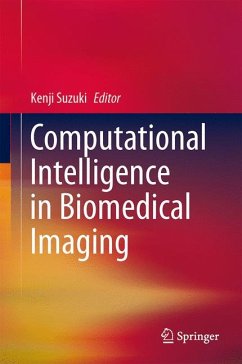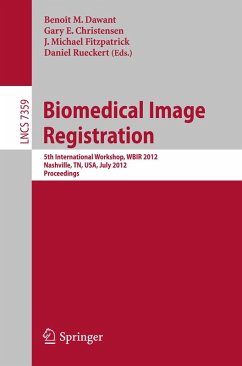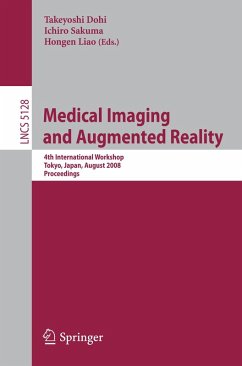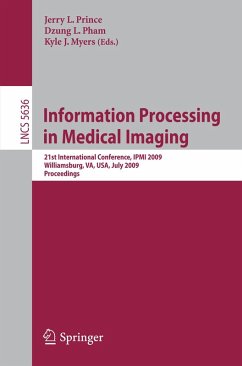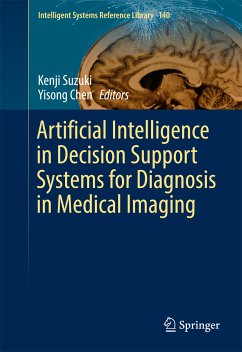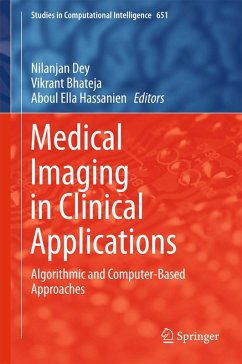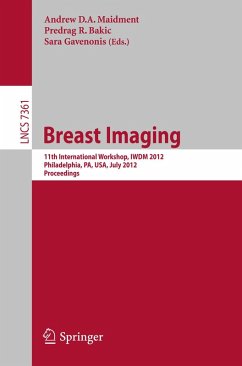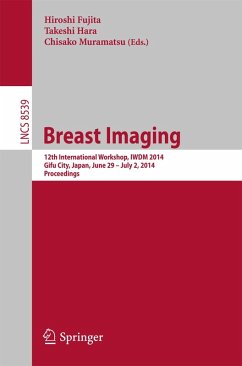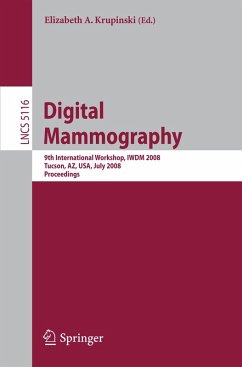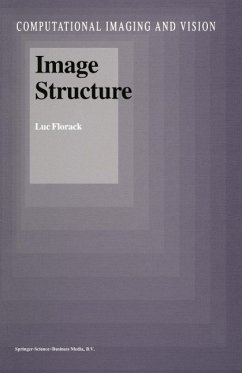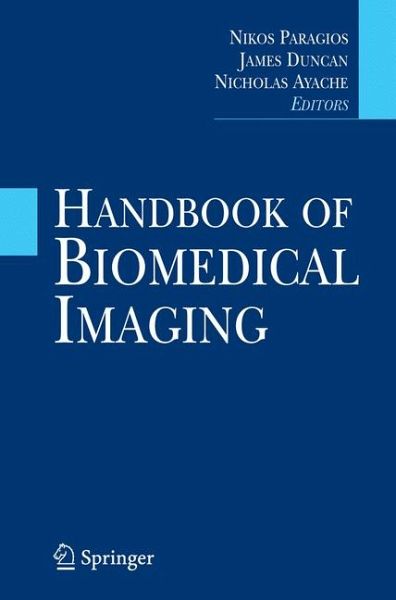
Handbook of Biomedical Imaging (eBook, PDF)
Methodologies and Clinical Research
Redaktion: Paragios, Nikos; Ayache, Nicholas; Duncan, James
Versandkostenfrei!
Sofort per Download lieferbar
160,95 €
inkl. MwSt.
Weitere Ausgaben:

PAYBACK Punkte
80 °P sammeln!
This book explains the process of computer assisted biomedical image analysis diagnosis through mathematical modeling and inference of image-based bio-markers. It covers five crucial thematic areas: methodologies, statistical and physiological models, biomedical perception, clinical biomarkers, and emerging modalities and domains.The dominant state-of-the-art methodologies for content extraction and interpretation of medical images include fuzzy methods, level set methods, kernel methods, and geometric deformable models. The models and techniques discussed are used in the diagnosis, planning, ...
This book explains the process of computer assisted biomedical image analysis diagnosis through mathematical modeling and inference of image-based bio-markers. It covers five crucial thematic areas: methodologies, statistical and physiological models, biomedical perception, clinical biomarkers, and emerging modalities and domains.
The dominant state-of-the-art methodologies for content extraction and interpretation of medical images include fuzzy methods, level set methods, kernel methods, and geometric deformable models. The models and techniques discussed are used in the diagnosis, planning, control and follow-up of medical procedures. Throughout the book, challenges and limitations are explored along with new research directions.
Handbook of Biomedical Imaging offers a unique guide to the entire chain of biomedical imaging, explaining how image formation is done and how the most appropriate techniques are used to address demands and diagnoses. Radiologists, research scientists, senior undergraduate and graduate students in health sciences and engineering, and university professors will find this to be an exceptional reference.
The dominant state-of-the-art methodologies for content extraction and interpretation of medical images include fuzzy methods, level set methods, kernel methods, and geometric deformable models. The models and techniques discussed are used in the diagnosis, planning, control and follow-up of medical procedures. Throughout the book, challenges and limitations are explored along with new research directions.
Handbook of Biomedical Imaging offers a unique guide to the entire chain of biomedical imaging, explaining how image formation is done and how the most appropriate techniques are used to address demands and diagnoses. Radiologists, research scientists, senior undergraduate and graduate students in health sciences and engineering, and university professors will find this to be an exceptional reference.
Dieser Download kann aus rechtlichen Gründen nur mit Rechnungsadresse in A, B, BG, CY, CZ, D, DK, EW, E, FIN, F, GR, HR, H, IRL, I, LT, L, LR, M, NL, PL, P, R, S, SLO, SK ausgeliefert werden.




